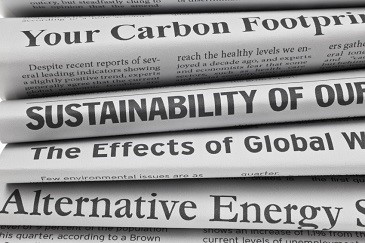
ASIA's booming economies have improved the lives of millions of people but that prosperity presents a dilemma. To ensure future growth and protect the planet from huge amounts of harmful carbon dioxide, Asia must satisfy its enormous appetite for energy in far cleaner and more efficient ways.
We must consider viable solutions. Can we move to new technologies such as electric vehicles? Can we use biology to develop new synthetic fuels and use more natural gas than oil and coal? Can we bring back nuclear power? Can we find ways to use more renewables such as solar and wind in more places?
Governments in Asia can take two major steps. The first is to develop policies that encourage efficiency for everything from appliances and cars to buildings and the landscape of cities. Singapore does this very well and is among the best already. The city state, which must import all of its energy, has policies and regulations to encourage efficiency and has designed its urban environment to minimise consumption.
Another example is California, which has had energy efficiency measures since the 1970s for appliances, cars, households and much more. This has helped the average Californian to use 30 per cent less energy than the average American.
The second major step is in the area of supply - pursuing the right policies for using more natural gas, nuclear power and renewables and, most of all, minimising the use of coal. A key improvement would be a very high carbon tax. Nobody likes taxes but a carbon tax is the most efficient way to force changes in the fuel mix.
The Asian Development Bank sees the region's population growing from 3.6 billion people now to 4.6 billion by 2035, with oil imports set to rise from 11 million barrels per day to more than 30 million over the same period. For Asia, the greatest challenge is how to deal with these intertwined surges in wealth, people and energy use that imply a huge rise in the output of carbon dioxide and great consequences for climate change.
Asia will be very vulnerable to climate change, from rising sea levels to altered rainfall patterns. Just look at the Mekong River, which is vital to food production and commerce, as it flows through six countries from the Himalayan highlands to the South China Sea. Imagine the scenario where the glaciers disappear at ever-faster rates and the source of the Mekong starts to dry up. That will cause major difficulties for many people and businesses in China, Myanmar, Laos, Thailand, Cambodia and Vietnam.
It's not just the Mekong. All of the major river systems in Asia are fed from the Himalayas. If that source fails, then the great risk is not just a reversal of economic development but conflict over resources.
The less coal we use, the better. This is a big problem for countries like China and India that have an abundance of coal, which makes it hard to avoid using the cheapest energy source at hand. As a result,
China's environmental problems are profoundly challenging. But the Chinese are taking sustainable energy very seriously and are investing in gas, wind, solar and nuclear power. Unfortunately, they are still using too much coal and have yet to tackle the issue of efficiency. But I think China is mostly getting it right.
For countries in Asia and elsewhere to steer the right course, the top three priorities are to raise the price of carbon, develop really advanced fuels and invest as much as possible in natural gas, nuclear power and renewables.
This is not simply an issue of development and prosperity. It is an issue of peace and war. This is the thing I worry about most - that if we fail to solve this dilemma of wealth and energy, we are creating the context for the next great conflict and major challenges that future generations will have to overcome.
Peter Schwartz is a futurist and senior vice president of salesforce.com.
This article was published in The Business Times on 4 September 2014
By: Peter Schwartz